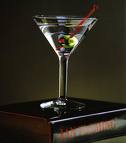 Let’s talk about cool summer drinks on hot summer days, and take a look at Vermouth, the key ingredient in many cool drinks, like the iconic Martini.
Let’s talk about cool summer drinks on hot summer days, and take a look at Vermouth, the key ingredient in many cool drinks, like the iconic Martini.
The official classification for Vermouth is ‘aromatized fortified wine,’ a tongue-twisting term that simply means a base white wine that has been fortified to a minimum of 16 percent alcohol and infused with a proprietary recipe of as many as 50 different plants, barks, seeds and fruit peels, collectively known as botanicals. While the infusion gives Vermouth its unique flavor and aroma, it is precisely that character that causes some people to dismiss vermouth as being ‘medicinal.’
This notion is not that far fetched, since Vermouth got its start in Northern Italy in the 16th century, as a medicinal drink created to cure many ailments of the time. Over the centuries, the basic formula has changed little, although the making of Vermouth has kept step with the technological advances of winemaking and distillation, and modern producers no longer make health claims for their Vermouth.
Still, Vermouth is under-used in America, losing its standing in classic drinks like the Martini and other cocktails. Call for a Martini today in any urban watering hole and you’re likely to get a glass of chilled gin or vodka with maybe a whiff of dry Vermouth.
European imbibers, and Italians in particular, favor bitter drinks as an appetite stimulating aperitif drink. So it’s common to find Europeans enjoying a healthy measure of fresh dry Vermouth over ice with a lemon twist, or even straight up.
 Americans, on the other hand, rarely enjoy Vermouth as an aperitif, tending to think of the aromatized wine only as a mixer. Little wonder, since most American Vermouth is mass produced and bears only a passing resemblance to traditional Italian and French Vermouths. A notable exception is Vya, made by Quady Winery (the California dessert wine specialist), a sophisticated European-style Vermouth.
Americans, on the other hand, rarely enjoy Vermouth as an aperitif, tending to think of the aromatized wine only as a mixer. Little wonder, since most American Vermouth is mass produced and bears only a passing resemblance to traditional Italian and French Vermouths. A notable exception is Vya, made by Quady Winery (the California dessert wine specialist), a sophisticated European-style Vermouth.
Stylistically, there are two basic styles or Vermouth, dry and sweet, with the main difference being the number and types of botanicals used in the recipe. Traditionally, Italy has been known for the red sweet style, while France has been recognized as the traditional producer of the white dry style. Today, the generalities no longer apply, with producers such as Italy’s Cinzano making both dry and sweet Vermouths.
Cinzano’s base wine for Vermouth comes mainly from the Trebbiano grape. Usually the base wine is sweetened and fortified by the addition of a mixture of sweet grape juice and alcohol. The botanicals are then added and the new Vermouth is left to macerate. After the herbal infusion, sugar is added to adjust the sweetness, then filtration and the addition of grape brandy to bring the alcohol content to between 15 to 18 percent and the blends are aged in tanks for six to eight months. Following pasteurization and a second filtering, the Vermouth is ready for bottling.
 Cinzano Extra Dry Vermouth, first introduced in 1920, has a zesty grapefruit peel and floral aroma and taste, with cardamom, citrus and a hint of bitterness. Cool down by blending Extra Dry Vermouth for a classic gin or vodka Martini, or a retro Society Cocktail, made with dry gin, dry vermouth and a splash of Grenadine. Any of these drinks and others can also be made using Cinzano Bianco, a slightly sweeter Vermouth with a hint of orange.
Cinzano Extra Dry Vermouth, first introduced in 1920, has a zesty grapefruit peel and floral aroma and taste, with cardamom, citrus and a hint of bitterness. Cool down by blending Extra Dry Vermouth for a classic gin or vodka Martini, or a retro Society Cocktail, made with dry gin, dry vermouth and a splash of Grenadine. Any of these drinks and others can also be made using Cinzano Bianco, a slightly sweeter Vermouth with a hint of orange.
Cinzano Rosso, also made from Trebbiano base wine, is fortified to 15% alcohol, than blended with caramelized sugar to adjust the sweetness and standardize the red-amber color. Rosso is more complex with caramelized fruits, scents of chamomile, while the flavors are sweet, thick and citrusy, with a pleasant bitterness.
As temperatures begin to rise, break out the Cinzano Rosso mix with Campari for an Americano, with gin and Campari for a Negroni, Scotch whisky for a Rob Roy and Bourbon or Rye whiskey for a classic Manhattan. All three Cinzano vermouths, Extra Dry, Bianco, Rosso, sell for about $9.00 a 750ml bottle, one of the best wine bargains available.
6
